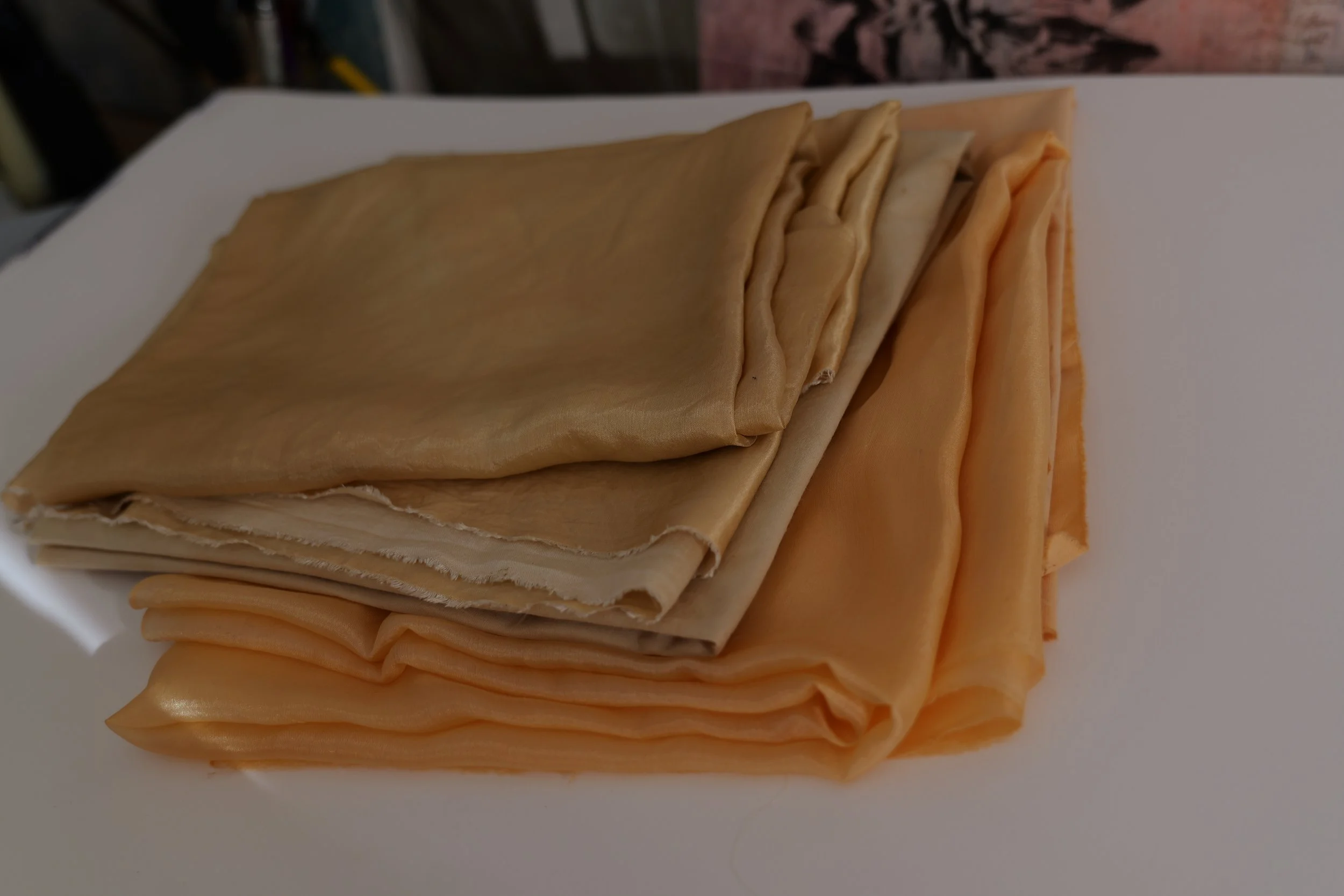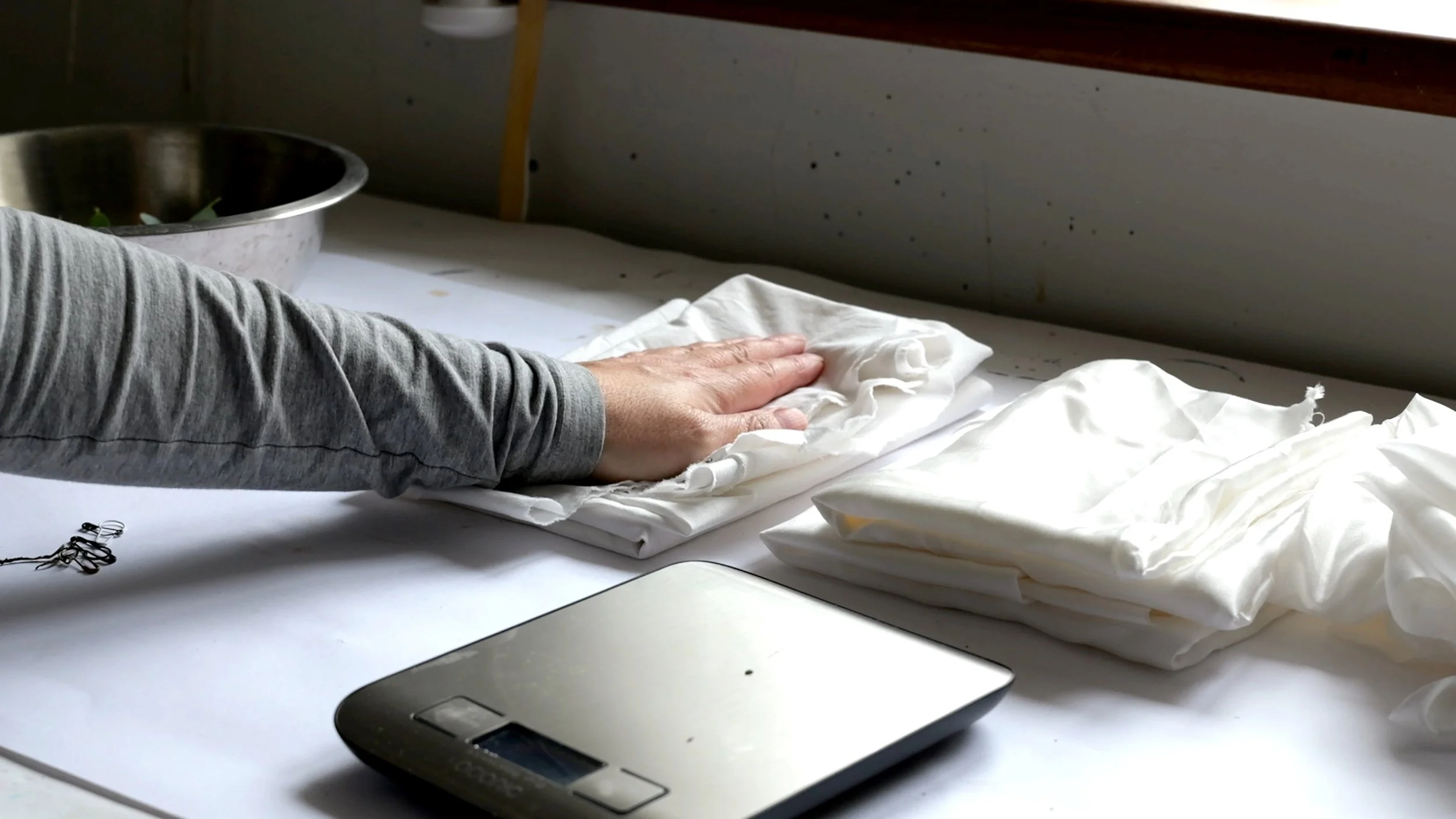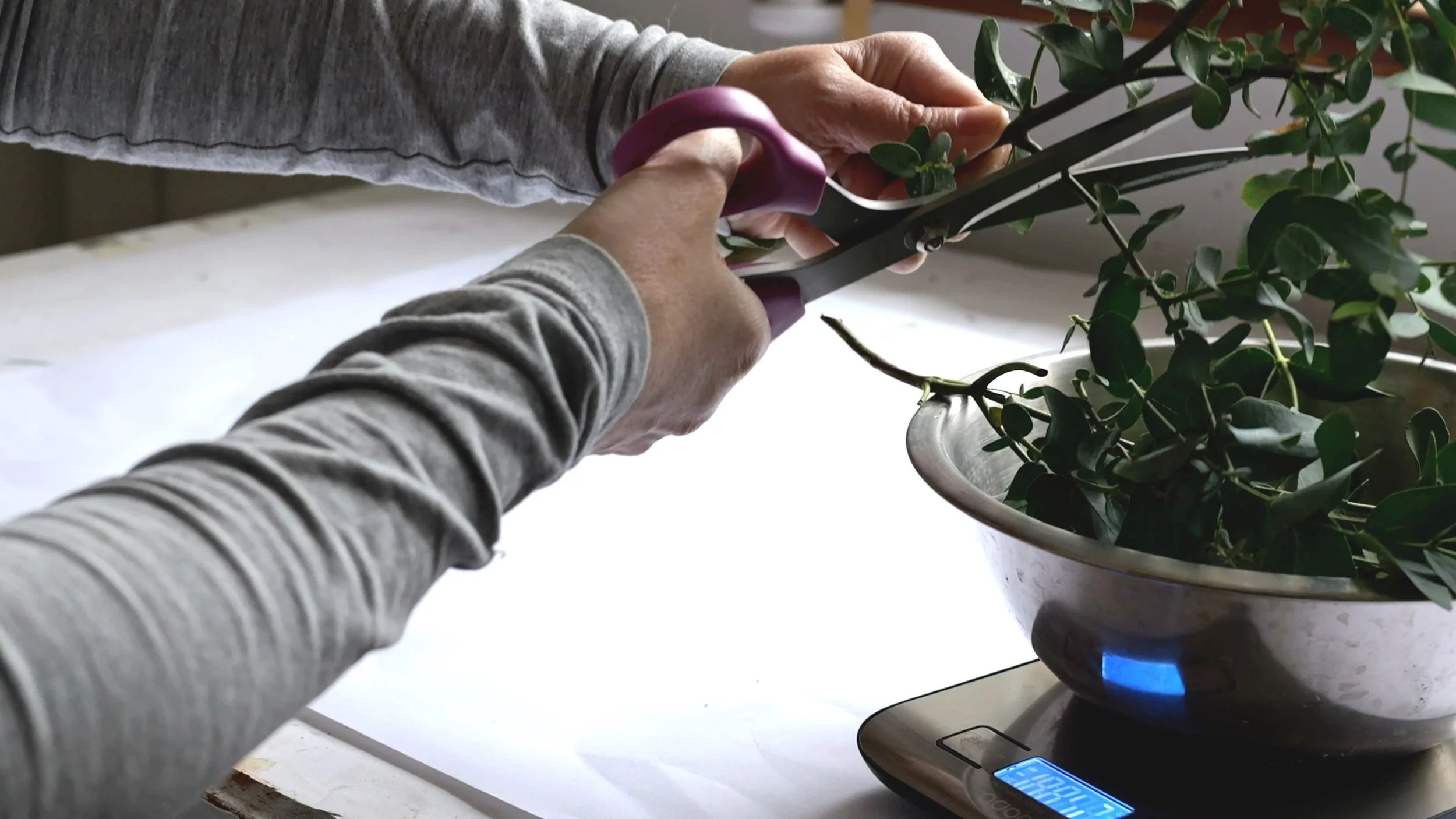An introduction to natural dyeing
I have been dabbling my toe (well fingers really) in the world of both eco printing - direct printing from leaves, and natural dyeing - extracting pigment from plant material and making a dye bath with it.
It’s a huge subject but having taken part in a workshop with Kate Turnbull from Secret Dyery and having had a go myself, I think you can start quite simply and with minimal equipment.
I used dahlias and eucalyptus from my garden and got two gorgeous colours. One thing to note is that different fabrics produce different results. Here I used cotton, a bamboo/silk mix and 100% silk.
So this is a straightforward way in which you can produce beautiful, colour fast fabrics from plants from your own garden or found when foraging.
I have two videos where I show some of the workshop I went on, with kind permission from Kate, and another where I demonstrate this method and the results I got. See at the bottom of the page.
Just to say, I am not an expert and I would really recommend a course or workshop if you want to go a bit more in depth.
Supplies
Plant material - Wild colour by Jenny Dean is a very useful book to see what colours you get from which plants
Aluminium lactate - this is your fixative and you can get it from here:
Micro scales - you need to be able to weigh in percentages of grams
A heat source
A dedicated cooking pot - preferably stainless steel
Tongs and a stirrer
Natural fabric - cotton, linen, silk, bamboo, wool - unless your fabric is described as Prepared for Dyeing (PFD), you need to scour it, which just means thoroughly washing it to remove any finish.
Look up for your specific fabric as the method varies.
Gloves and a face mask
Method
First you need to mordant your fabric. The word literally means “to bite” and it is what binds the pigment from the plants to the fabric and make it colourfast. There are lots of different ones but aluminium lactate, a by product of the sugar industry, is the safest to use - both for the environment and for health and safety.
Despite this, it is still a good idea to wear gloves and a face mask when handling as it is a very fine powder.
You will need 5% to 10% of the dry weight of the fabric you are using so weigh your fabric first and then measure out the mordant.
Dissolve the powder in a small amount of hot water, then add sufficient water to cover your fabric. Leave it to soak for a couple of hours, agitating it every now and again to ensure even coverage. Rinse to remove any excess mordant.
Preparing your plant material. A good rule of thumb is to use approximate the same weight of fresh dye material as that of your fabric. If your material is dry you can reduce this to half the weight, as the pigment will be more concentrated.
Cut it up into small bits, put into your dye pot and add enough water so that when later you add your fabric it has enough room to move around.
At first I worried about diluting the dye if I added more water, but I’ve since learned that it is the particles in the pigments that bind to the fabric rather than the concentration of the liquid so you don’t need to worry about this.
Heat the pot until it’s simmering and keep it at this temperature for about an hour. Turn off the heat and let it infuse for a few hours or overnight. If you prefer you can now sieve it to remove the plant debris although I must admit I didn’t bother!
When you’re ready to dye, heat up the liquid again, add your prepared fabric and simmer for another hour and then turn off the heat and leave it until it’s completely cool.
Remove the fabric, wash in a gentle non bio detergent and then iron to reveal the colour.
Please let me know if you have a go at this - there’s just so much potential with it. I now want to make a darker pigment - I’m going to try cherry tree bark, and a mid tone green, and use the range of colours in some art projects. So come back to see what I create!






